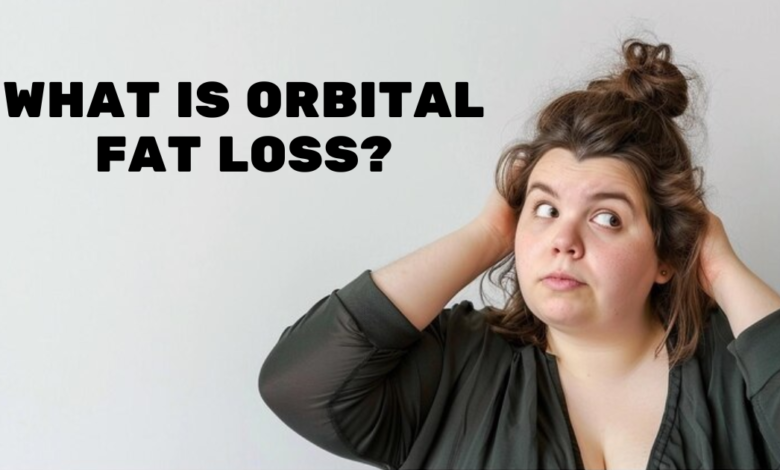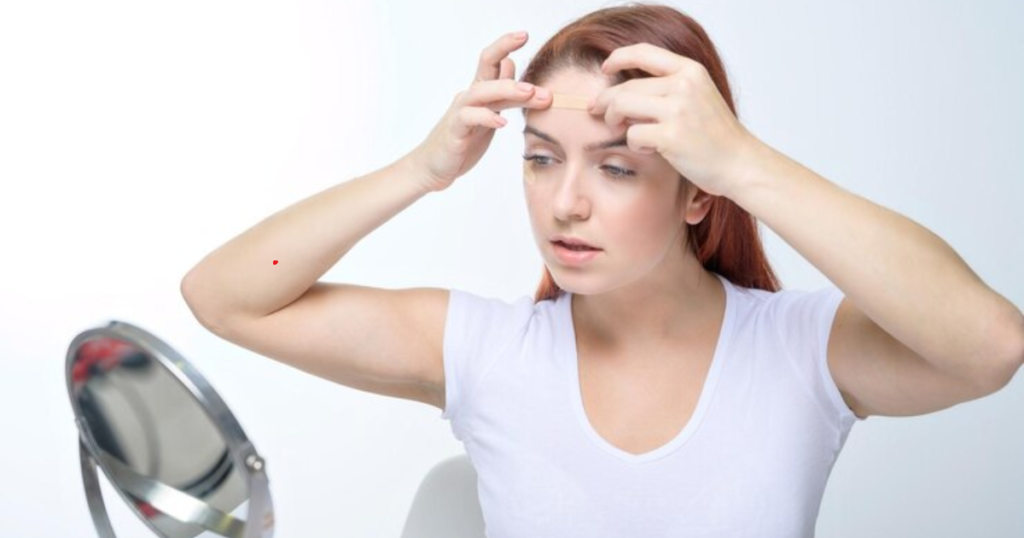What is Orbital Fat Loss? Symptoms, Causes & Treatments

Orbital fat loss might seem like a big, scary word, but it’s something that can happen to many people, especially as they get older. To know what it means to lose this fat, we need to first understand what the fat around our eyes does and why it matters.
What is Orbital Fat?
Orbital fat is adipose (fatty) tissue found within the eye socket, or orbit, which surrounds the eye. This fat is essential for cushioning and preserving the eye, as well as keeping it properly positioned within the socket.
It absorbs shocks and offers insulation, keeping the eye steady and functioning properly. Orbital fat is vital for the eye’s overall health and function, since it aids in movement and support within the bony orbit.
Symptoms of Orbital Fat Loss
Orbital fat loss is a condition in which the fat around the eye socket reduces. This illness can cause a variety of obvious symptoms:
- Sunken Eyes: The most noticeable indicator of orbital fat loss is the appearance of sunken eyes. The eyes may appear to be sunken deeper into their sockets.
- Hollowing Around the Eyes: There is frequently a visible hollowing or dark shadow around the eyes, giving them a worn or elderly aspect.
- Increased Prominence of Blood Vessels: Blood vessels may become more visible as the fat layer thins.
- Changes in Eyelid Position: The upper and lower eyelids may droop or sag, affecting the shape and contour of the eyes.
- Vision alterations: In severe circumstances, eye position alterations can cause double vision or other visual problems.
- Reduced Softness and Volume Around the Eyes: The area around the eyes may feel less cushioned and more bony when touched.
- Aging Appearance: Loss of orbital fat can add to an overall aged appearance, making people appear older than they are.
- Discomfort or Pain: Some people may feel discomfort or pressure around their eyes.

Causes of Orbital Fat Loss
Several factors can contribute to the loss of orbital fat. These include natural aging, medical conditions, lifestyle choices, and environmental influences.
1. Aging
Aging is the leading cause of orbital fat loss. As we age, the skin and tissues surrounding our eyes lose suppleness and volume. The fat pads that originally gave support and fullness progressively deplete, resulting in a sunken appearance.
- Collagen and Elastin Breakdown: With age, the production of collagen and elastin decreases, causing the skin to become thinner and less resilient.
- Fat Redistribution: Fat loss occurs not only around the eyes but also in other facial areas, contributing to an overall aged appearance.
2. Genetic Predisposition
Genetics significantly influence the distribution and volume of orbital fat. Some people may be predisposed to ocular fat loss due to their genetic composition.
- Family History: If your family has a history of early orbital fat loss, you may be more likely to experience it.
- Ethnic Factors: Certain ethnicities are predisposed to having less orbital fat, which can make the eyes appear more sunken.
3. Medical Conditions
Various medical problems might cause the loss of ocular fat. These disorders can directly impair adipose tissue or induce systemic problems that affect the entire body, including the orbital area.
- Graves’ Disease: An autoimmune disorder that can cause the eyes to bulge and lead to fat loss around the orbits.
- HIV/AIDS: This condition can result in facial wasting, including the loss of orbital fat.
- Lipoatrophy: A condition characterized by the loss of fat tissue, which can affect the face and eyes.
4. Rapid Weight Loss
Significant and quick weight loss can result in a reduction in face fat, notably around the eyes. This could be due to dieting, bariatric surgery, or illness.
- Nutrient Deficiency: Rapid weight loss can lead to a lack of essential nutrients that support skin and tissue health.
- Fat Reduction: As the body loses weight, fat stores are depleted, which can include the orbital fat.
5. Environmental and Lifestyle Factors
Lifestyle and environmental factors can both contribute to the reduction of orbital fat. These variables can hasten the aging process and affect general health.
- Poor Diet: A diet lacking in essential nutrients can affect skin and tissue health, leading to a loss in orbital fat.
- Smoking: Smoking accelerates aging and reduces skin elasticity, contributing to fat loss around the eyes.
- Sun Exposure: Excessive sun exposure damages the skin and can lead to premature aging and fat loss.

Do Prostaglandin Analogue Lash Lengtheners Cause Eyelid Fat and Volume Loss?
Prostaglandin analogue lash lengtheners, used for glaucoma treatment, can cause eyelid fat and volume loss in some individuals. These medications can cause atrophy or thinning of periocular fat, leading to a sunken appearance of the eyes and reduced eyelid volume.
Other potential side effects include periorbital pigmentation, darkening of skin around the eyes, darkening of eyelashes, increased brown pigmentation in the iris, and eye irritation. The exact mechanism behind these side effects is not fully understood.
Do All Lash Serums Cause Orbital Fat Loss?
Although not all lash serums cause orbital fat loss, some formulations, particularly those containing prostaglandin analogs, may have this effect. Prostaglandin analogs, a type of medicine originally used to treat glaucoma, have been shown to stimulate eyelash development. However, they can cause a decrease in orbital fat, which is the fat surrounding the eyes. This might result in a sunken appearance, among other cosmetic alterations.
Most lash serums on the market contain a variety of components, including peptides, vitamins, and botanical extracts, that seek to nourish and thicken lashes without the hazards associated with prostaglandin analogs. Before utilizing a lash serum, make sure you read the ingredient list and study any possible negative effects.

Medical Treatments for Orbital Fat Loss
Fortunately, several medical treatments can help restore the lost volume and improve the appearance of the eyes.
1. Dermal Fillers
Dermal fillers are among the most popular and effective treatments for orbital fat loss. These injectable treatments use hyaluronic acid (such as Restylane and Juvederm) to restore volume and decrease the hollow appearance under the eyes.
- Procedure: A small amount of filler is injected into the tear trough area.
- Duration: The procedure takes about 15-30 minutes.
- Recovery: Minimal downtime, with some swelling and bruising possible.
- Results: Immediate, lasting from 6 months to 2 years, depending on the filler used.
2. Fat Grafting
Fat grafting, often called fat transfer, is the process of extracting fat from another part of the body (such as the abdomen or thighs) and injecting it into the orbital area.
- Procedure: Fat is extracted, purified, and then carefully injected into the hollows under the eyes.
- Duration: The procedure can take 1-3 hours.
- Recovery: Swelling and bruising can last up to 2 weeks.
- Results: Long-lasting, as the transferred fat integrates with the existing tissue.
3. Platelet-Rich Plasma (PRP) Therapy
PRP therapy rejuvenates and restores volume to the skin by using the patient’s own blood. Plasma containing growth factors is injected into the orbital area to induce collagen formation.
- Procedure: Blood is drawn, processed to extract plasma, and injected into the targeted area.
- Duration: About 30-60 minutes.
- Recovery: Minimal downtime, with some swelling and bruising possible.
- Results: Gradual improvement over several weeks, with effects lasting up to a year.
4. Laser Therapy
Laser treatments can increase collagen production and enhance skin texture around the eyes. While they do not directly target fat removal, they can improve the overall appearance of the area.
- Procedure: Laser is applied to the skin around the eyes.
- Duration: 30-60 minutes.
- Recovery: Minimal downtime, with possible redness and swelling.
- Results: Gradual improvement over multiple sessions, lasting several months to years.
5. Surgical Options
For extreme situations, surgical intervention may be required. This may involve relocating or adding fat to the orbital area.
- Procedure: Performed by an oculoplastic or cosmetic surgeon, often under general anesthesia.
- Duration: 1-2 hours.
- Recovery: Several weeks for full recovery, with bruising and swelling.
- Results: Long-lasting, often permanent.

Non-Medical Approaches
In addition to medical treatments, there are several non-medical approaches that can help manage and prevent orbital fat loss:
- Dietary Changes: Consuming a balanced diet rich in essential nutrients can support overall eye health.
- Exercise and Physical Therapy: Regular exercise can improve circulation and overall well-being, potentially slowing the progression of fat loss.
- Home Remedies and Preventive Measures: Simple practices like using moisturizers around the eyes and wearing protective eyewear can make a significant difference.
Related: Can I Use Expired Eye Drops?
Conclusion
Orbital fat loss means losing the fat around your eyes, which can affect your eye health and how you feel overall. Knowing what causes it, what signs to look for, and how to treat it is important to handle it well. By taking steps to prevent it and keeping up with new research, people can deal with orbital fat loss better.
People Also Ask
1. What is orbital fat loss?
Orbital fat loss occurs when the fat surrounding your eyes, known as “orbital fat,” reduces or thins. This fat protects and cushions the eyes. When you lose this fat, your eyes may appear sunken or hollow.
2. Why does orbital fat loss happen?
There are various possible causes of orbital fat loss. It could happen as you become older, due to aging. It may also occur if you lose a large amount of weight suddenly or if you have certain medical issues. Treatments or procedures around the eyes might also contribute to this condition.
3. How can I prevent orbital fat loss?
To help prevent orbital fat loss, it’s important to maintain a healthy lifestyle. Eating a balanced diet, staying hydrated, and protecting your skin from too much sun can be helpful. Also, avoid rapid weight loss and take care of your overall health.
4. Can orbital fat loss be treated or reversed?
Yes, there are therapies for reducing orbital fat. Doctors may recommend fillers or fat grafting to replace the decreased fat around your eyes. These procedures might make your eyes appear larger and less sunken. It is advisable to see a specialist to determine the best solution for you.
5. Is orbital fat loss dangerous?
Orbital fat loss is rarely hazardous, but it can have an impact on how you look and, in some cases, feel. If you detect any changes around your eyes or are worried, visit your doctor. They can check to see whether everything is okay and offer suggestions for how to help.




